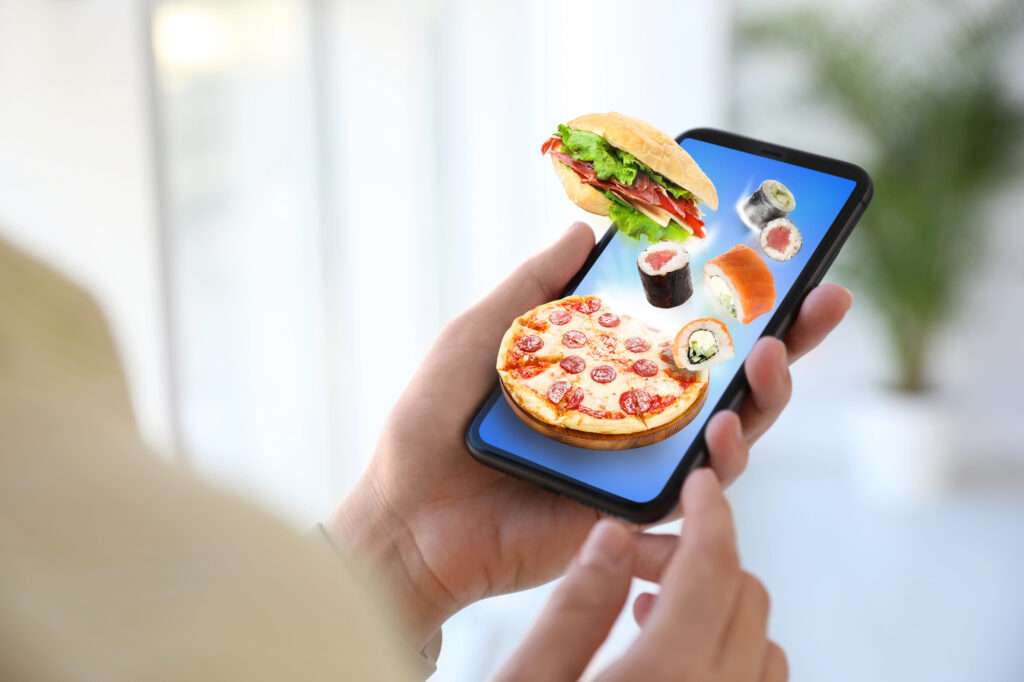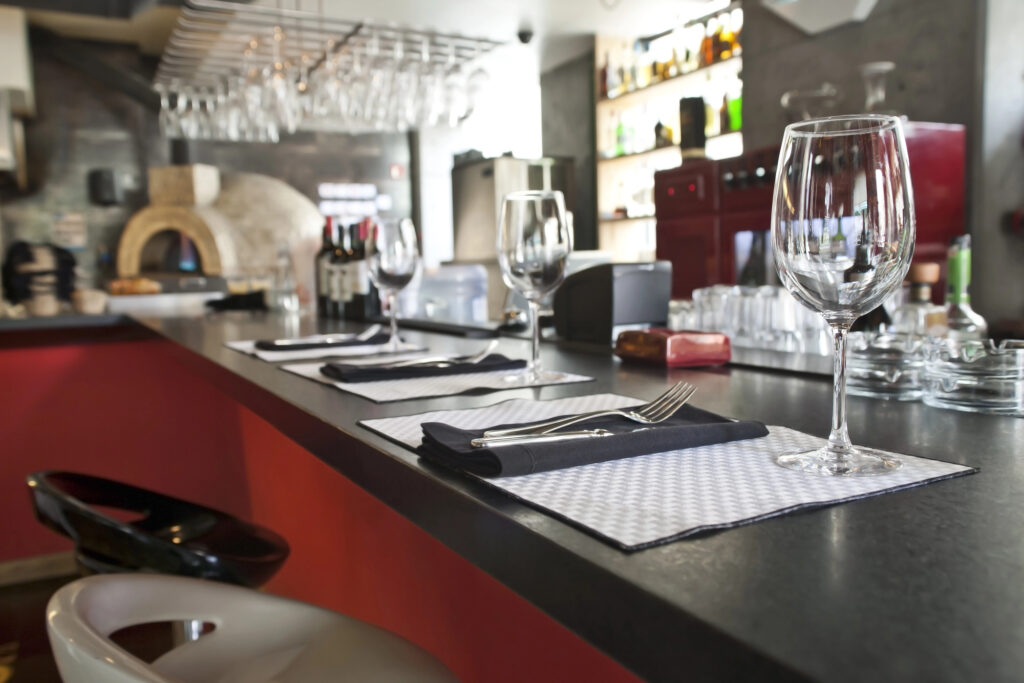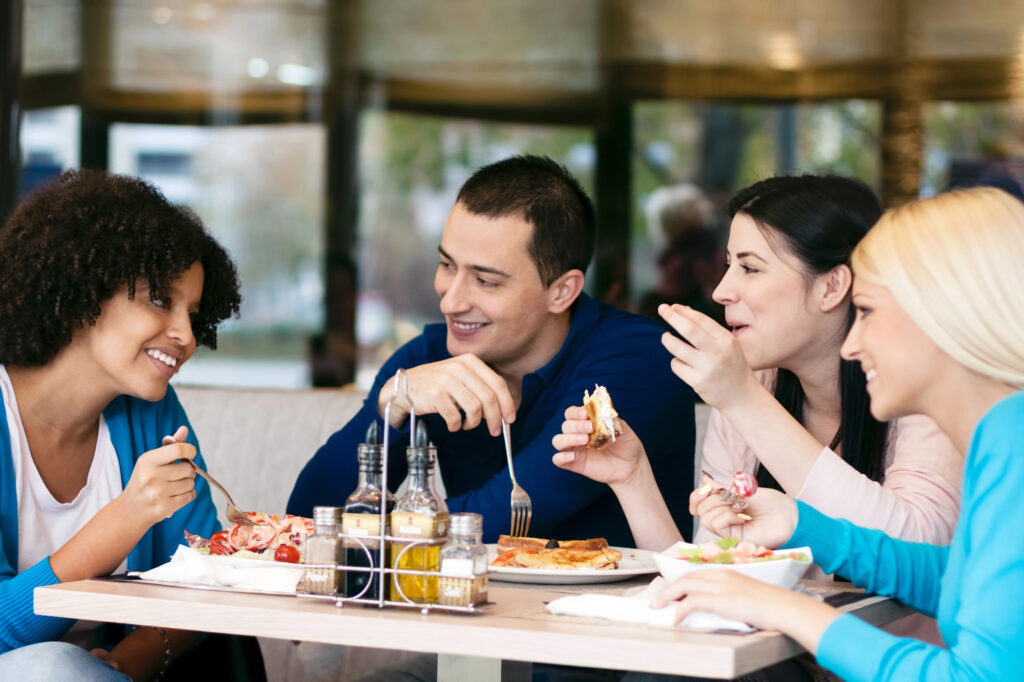Walk down any street in America and you’ll find yourself spoiled for choice: cafés brewing specialty lattes, fast-food outlets promising a burger in five minutes or less, ghost kitchens lurking in the digital shadows, and full-service restaurants plating up three-course feasts.
The food service industry is enormous, competitive, and growing faster than your waistline at an all-you-can-eat buffet. With more than a million establishments fighting for attention, how does a single business stand out?
Putting a chalkboard on the sidewalk might have worked 30 years ago. Today, diners are more likely to discover their next favorite place while scrolling on their phones, searching Google Maps, or clicking on a targeted ad.
With programmatic advertising software on the menu, food businesses can get access to the marketing secret sauce and reach the right people at the right moment.

The Food Service Industry: Scale, Spending, and Consumer Behavior
Industry Scale and Economic Impact
The food service industry remains one of the most dynamic and influential sectors of the U.S. economy.
In 2025, industry sales are projected to reach an astonishing $1.5 trillion, underlining not only its sheer size but also the significant opportunities it offers for businesses, marketers, and innovators.
Advertising Investment and Market Competition
Advertising investments have kept pace with industry growth. In 2024, local food advertising spending climbed to $14.1 billion, representing a 3% increase over the previous year.
Food businesses are aggressively vying for consumer attention because, in such a crowded marketplace, even established brands cannot rely solely on reputation; they must continually invest in outreach to remain top of mind.
Consumer Behavior and Digital Visibility
At the same time, evolving consumer behavior is reshaping how restaurants and food service companies attract customers. Nearly 94% of diners now turn to online sources—from search engines and review sites to social media platforms—when looking for new places to eat.
Digital presence has shifted from a nice-to-have to an essential component of business success.
For establishments relying only on word of mouth, the stakes have never been higher. Without proactive marketing and a strong online footprint, even quality food offerings can go unnoticed.
How Programmatic Advertising Helps Food Businesses
Programmatic advertising gives food businesses a smart way to reach the right customers without wasting time or resources:
Hyper-Local Targeting
Most people aren’t willing to drive miles for a quick lunch, so reaching nearby diners is a must. Programmatic advertising allows businesses to focus on audiences in specific areas, showing promotions to those most likely to visit, order, or engage with the brand.
For example, a café can promote a new seasonal latte to people within a one-mile radius, keeping ad spend efficient while connecting with the most relevant local audience.
Campaign Performance Analysis
Programmatic tools reveal exactly how marketing messages resonate with different audiences across multiple platforms. Businesses can track engagement metrics, see which messages spark interest, and understand how different customer groups respond to specific promotions.
Marketing teams can use this knowledge to experiment with new ideas, test creative approaches, and refine messaging over time. By continuously learning from real-world performance, campaigns become smarter, more relevant, and more effective at connecting with audiences.
Better Budget Allocation
Understanding performance allows businesses to allocate their advertising budgets more strategically. Funds can be shifted toward the channels, times, or audience groups that deliver the highest impact, reducing waste and maximizing return.
Insights from performance tracking also help identify which campaigns resonate most with different customer segments, enabling more precise messaging and creative optimization.
As a result, every advertising dollar is used effectively, even for smaller or independent food establishments, helping them compete with larger brands.
Over time, a data-driven approach builds a clearer picture of customer behavior, allowing businesses to refine strategies, improve engagement, and increase both visits and orders without overspending.
Reaching Diners at the Perfect Time
Timing matters when it comes to food. Breakfast deals work best in the morning, while dinner specials or happy hour promotions are more effective later in the day.
Programmatic campaigns can align with typical dining habits, making sure offers appear when potential customers are most receptive.
Audience Segmentation and Personalization
Not every diner is looking for the same thing. Families might prioritize kid-friendly meals, while students or young professionals often want quick, affordable options.
Programmatic advertising allows businesses to tailor their messages for different groups, so their offers reach targeted audiences and marketing efforts are more relevant and effective.
Boosting Online Discovery and Reservations
With most diners searching online before deciding where to eat, having a strong digital presence is crucial. Programmatic advertising helps businesses appear on mobile platforms, connected TV, and more.
For restaurants that take reservations, ads can even guide people straight to booking, making it easier to turn interest into action.
Driving Delivery and Takeout Orders
Takeout and delivery are no longer just extras; they’re a big part of many businesses’ revenue.
Programmatic campaigns can promote delivery options, highlight menu specials, and keep your business top of mind for customers on food ordering apps. This is especially important for ghost kitchens, which rely entirely on digital visibility.
Managing Seasonal Promotions and Limited-Time Offers
Special events, holidays, or limited-time dishes often drive bursts of traffic. Programmatic advertising can make sure these promotions get to your audience, helping maximize their impact and bring in more diners during key times.
Competing Against Larger Chains
Independent food businesses often face competition from big national brands. Programmatic advertising helps level the playing field by allowing smaller businesses to focus their marketing strategically.
Smart targeting and precise messaging let local cafés or restaurants stand out and attract loyal customers, even against larger competitors.

Other Marketing and Advertising Strategies for the Food Service Industry
While programmatic advertising is a powerful tool, it works best as part of a broader marketing strategy.
Many food businesses find success by combining digital campaigns with other tried-and-true methods that encourage repeat visits, build loyalty, and attract new customers.
1. Loyalty and Rewards Programs
Customers respond well when they feel appreciated. Loyalty programs—whether app-based points systems, digital punch cards, or special rewards for frequent visits—encourage repeat business.
A well-designed program increases customer retention and provides valuable data on dining habits, helping businesses tailor offers and promotions more effectively.
2. Discount Campaigns and Promotions
Special deals and limited-time discounts are a classic way to draw in customers, fill slower periods, or introduce new menu items. Programs like “buy one, get one free” or weekday specials can attract diners who might not otherwise visit.
When paired with targeted advertising, these campaigns reach the people most likely to respond, boosting both traffic and revenue.
3. Social Media Engagement
Social media has become a key part of restaurant marketing, particularly for visually appealing dishes and memorable experiences. Posting high-quality photos, highlighting seasonal items, sharing behind-the-scenes content, and engaging with customers’ posts can build brand awareness and loyalty.
Encouraging user-generated content, like reviews or photos tagged with your location, also helps extend reach organically.
4. Influencer and Local Partnerships
Partnering with local food bloggers, influencers, or community events can introduce a business to a wider audience. Collaborations often carry more credibility than traditional ads because potential customers see real people enjoying your offerings.
Even a single post or story can generate significant visibility for a new menu item, special promotion, or unique dining experience.
5. Email and SMS Marketing
Direct communication with customers remains highly effective. Email newsletters or SMS alerts can promote seasonal specials, limited-time offers, or events, keeping loyal customers engaged.
Moreover, these channels allow businesses to share important updates, like new menu items, changes in hours, or delivery options, ensuring customers stay informed and connected.
6. Community Engagement and Local Presence
Establishments that actively participate in their local communities often benefit from increased visibility and goodwill.
Sponsoring events, hosting fundraisers, or collaborating with other local businesses can strengthen a restaurant’s reputation and attract customers who value community-minded businesses.
Combining these strategies with programmatic advertising creates a comprehensive marketing approach. Digital campaigns ensure businesses reach audiences efficiently, while loyalty programs, social media, and community engagement build long-term relationships with customers.
Together, these efforts help food businesses stay competitive, grow their customer base, and adapt to an ever-changing dining landscape.

Ready to Put Programmatic Advertising Software on Your Menu?
If you want to see how programmatic advertising can help your food business connect with more diners and increase engagement, it’s time to partner with experts who understand the industry.
At KPAI, our services boost digital visibility, connect with local audiences, and offer automated ad buying, ensuring your promotions are delivered efficiently across multiple platforms. We also analyze and adapt campaigns based on performance metrics, helping you make data-driven decisions that improve engagement and reach.
With us, your brand stays top-of-mind while your marketing works smarter, not harder. Contact us for a meeting and make a difference!



